At last, I captured my first Hawk-moth in moth trap this month. Hawk-moths are impressive medium to large moths, often strikingly coloured, and include the biggest moths in Britain in terms of wingspan and body size. They are known as hawk-moths because their fast and maneuverable flight and large size.
With the exception of the few day-flying hawk-moths, the adults of most hawk-moths come regularly to light, and are only occasionally found at rest by day, usually when newly emerged. Those that feed can be found searching out the nectar plants, to which they will return repeatedly. A number have brightly coloured hindwings and will flash when disturbed, in order to deter predators. The females are generally bigger than the males, and the males rest with the tip of the abdomen curled upwards.
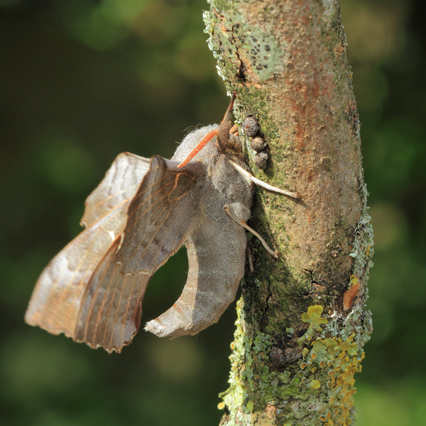
Male resting with the tip of the abdomen curled upwards.
My field guide informs me that there are nine species of Hawkmoth resident in the British Isles. Nine others occur as immigrants, some regularly breeding, but in the early stages are unable to survive the winter, although one species, the Hummingbird Hawk-moth, hibernates as an adult, mainly in the south-west of England. Last year, I saw one of these delightful Hawk-moths, hovering over jasmine flowers in my back garden. I could see its long tongue delving deep to drink the nectar as it hung motionless in the air. However, photographing this species is a huge challenge since the moth’s wings never stop as it darts suddenly from flower to flower, staying in one place for only a few seconds.
My other encounter with a Hawk-moth was more recent, on a warm, muggy June night. It was around midnight that while inspecting jasmine bushes in my back garden an Elephant Hawk-moth’s buzzing wings literally brushed my face. With my head-torch on, I could make out its beautiful pink and green/brown coloration before it disappeared into the depths of the night. Once again, there was little chance of being able to capture it with my camera.
The moth resting in my trap was unmistakable and easily recognized as a male Poplar Hawk-moth – Laothoe populi. Subtle shades of greyish, purplish and pinkish colouration on the male and chestnut brown patches on the female’s hindwing are a sure diagnostic along with the scalloped wing edges that reminded me of the comma butterfly’s leaf-edged wings. Looking at the wings in closer detail I could see that they had a strong pinkish/violet tinge to them and the whole moth appeared to have an attractive velvet-like sheen. At rest, the moth’s hindwing projected well beyond the leading edge of forewing.
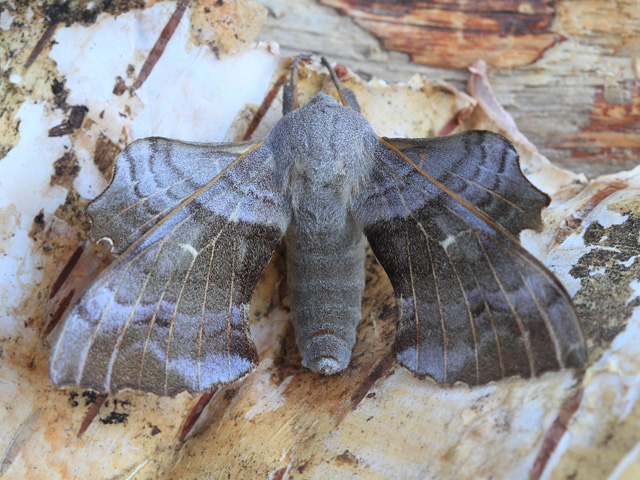
Moth’s hindwing projected well beyond the leading edge of forewing.
Males usually fly after midnight, females earlier. They overwinter as a pupa underground, near the larval foodplant around June-Sep, occasionally later. Larval poodplants, including Aspen, White Poplar, Black-poplar and Lombardy-poplar. They are also frequent on sallows and willows, particularly Goat Willow and Grey Willow.
Although in my garden, Poplar Hawk-moths are more commonly found in most situations in which larval foodplants grow, including parks, fens woodland, heathland and moorland (but not high altitudes). This is the most widely distributed hawk-moth in the British Isles. Recorded from all parts of mainland Britain, Ireland and Channel Islands, on Man, in the Hebrides and on Orkney.
A night flyer, the Poplar Hawk-moth along with three other species of hawk-moths (The Lime – Mimas tilae, Privet – Sphinx Ligustri, and Eyed – Smerinthus ocellata) may sometimes be found by day, perhaps resting on a fence post or in an open conservatory. Most of the other night-fliers are rarer and less likely to be seen. The Poplar Hawk-moth, like the other three (Lime, Privet and Eyed) relies entirely on the store of food that it has accumulated as a caterpillar as it does not have a functioning proboscis and so cannot feed as an adult.
Moths tend to be fairly docile around dawn when it is relatively cool and not bright enough for them to feel exposed and try to hide. This makes it easier to go through the trap and record the contents. Moths trapped off onto surrounding vegetation, tree trunk or branch will often sit quietly, which gives an ideal opportunity to take a picture. I prefer natural light without flash or sometimes with ambient light and a little flash, just strong enough to highlight and enhance form and detail. The long exposures governed by early morning necessitate the use of a tripod, or else the photo will be disappointingly out of focus when viewed later.
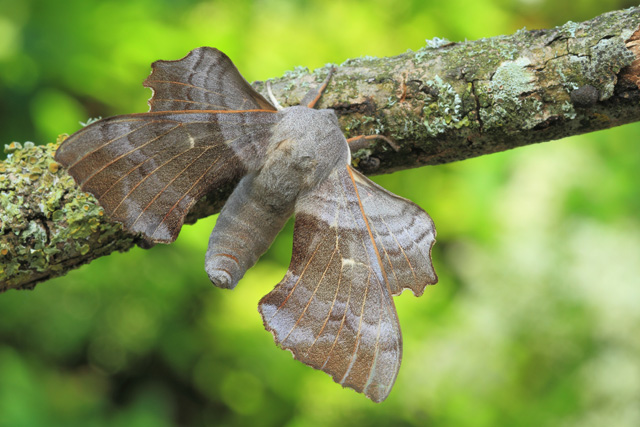
Moths trapped off onto surrounding vegetation, tree trunk or branch will often sit quietly, which gives an ideal opportunity to take a picture.
I remember once having gone to the trouble of carefully mounting camera on tripod and then carefully composing pictures of a Buff Ermine moth while naively firing away, only to find later that the pictures were hopelessly out of focus. The extra precaution of using a shutter release would have avoided this embarrassment and ensured that all the images were focused. One learns from one’s mistakes and so this time, I made sure that I used a camera release along with mirror-lock to negate any accidental movement and ensure clear pictures.
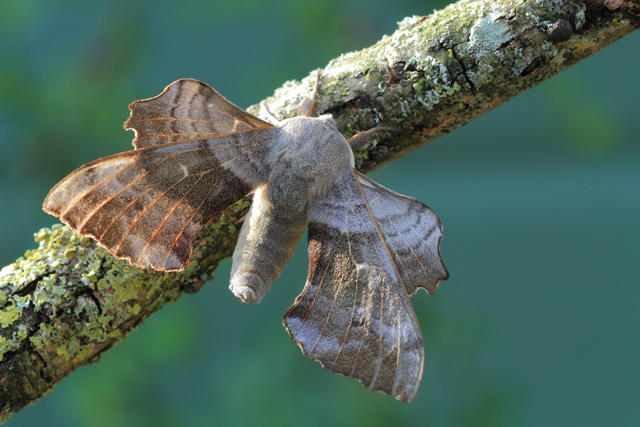
Same set up as above, but waited a few moments later for the sun to rise which backlight the moth’s wings, giving a more three-dimensional look.
Ideally, I like to set my camera to aperture priority with a large ‘f’ number. This will give a good depth of field so that as much of the moth as possible is sharply in focus, but it will mean that the necessary exposure time will be longer – hence the need for a stable tripod to avoid blurred pictures. As with all macro photography, the trick is to take plenty of shots and keep just the best few. It is also worth taking a shot or two as soon as possible in case the insect flies away. If it doesn’t, there is the chance to get a better picture and possibly get a lot closer for the intimate portrait rarely seen in the field.
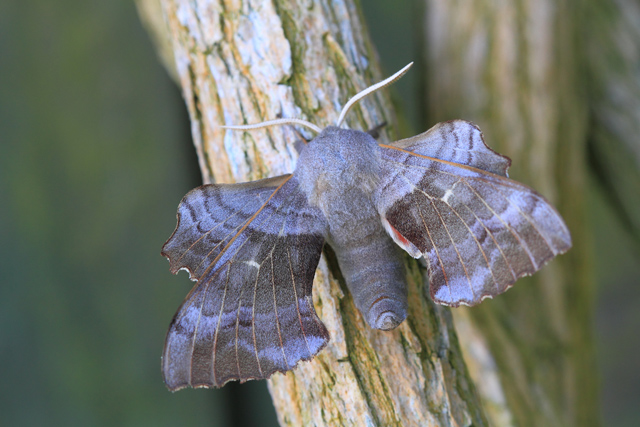
Starting to get inpatient the moth finally started to vibrate its wings and partly reveal its brightly coloured hindwings (you can just about see the beginning of the red spot on the hindwing appearing). They do this when disturbed, in order to deter predators or nosey photographers!

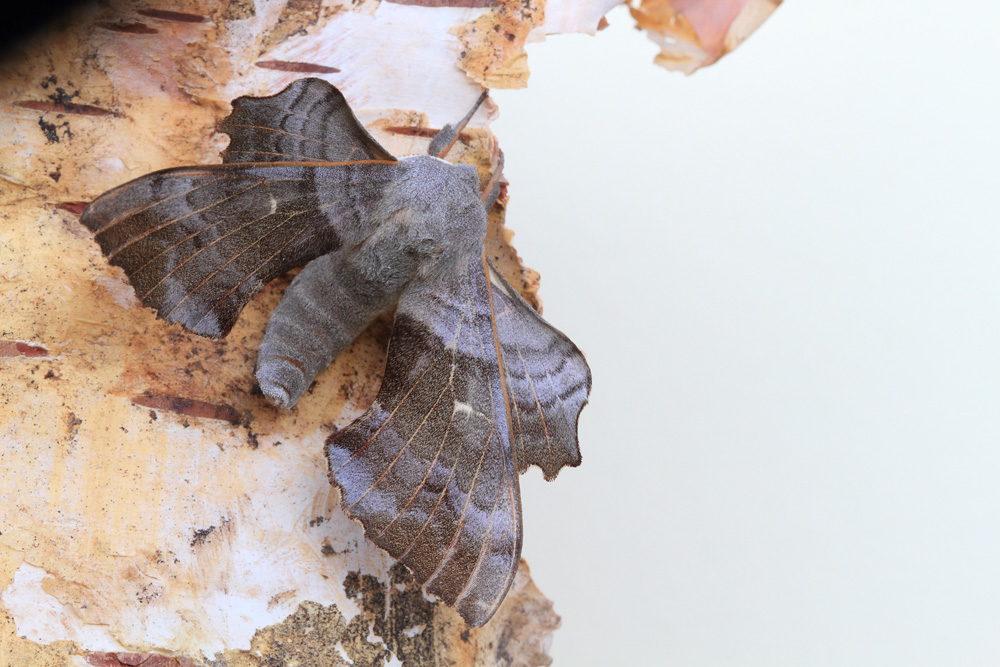
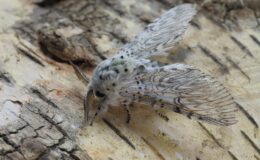
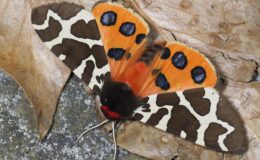
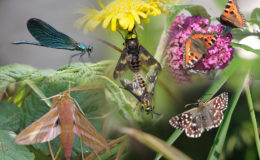
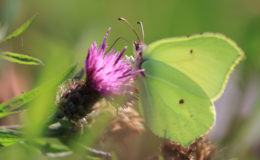
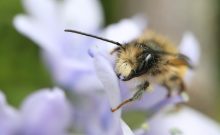
Leave a Comment